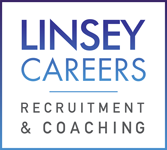How much time do you give yourself to make critical, long term decisions? A week? A few days? An hour? Thirty minutes? More than likely, you give yourself more time, rather than less. So why would you treat a hiring decision any differently than a personal, long term decision? After all, this person will be a member of your team, will spend 40+ hours per week with you, and help make or break your business goals.
One answer I hear often: “We’re busy and don’t have time for more than 30-minute interviews. Besides, not everyone on the team gets a full vote on the matter – I just want them to meet the candidates.”
Okay, I get that. Not everyone should have veto power on an interview process, but if they don’t even have a vote, then why include them at all? There are other ways to create a pre-hire introduction, which I’ll cover in a separate post.
When making a hiring decision, you need to ensure that you, the hiring leader, and everyone on the interview team is able to accurately evaluate the candidates, their ability to do the job, and if there’s the right chemistry to do it in your organization. The best way to do that is to set everyone up for success right from the beginning.
The first step is to share your vision of the position with the entire interview team. I’m not just talking about the job description –share your vision of what success looks like for the person taking this role. What will they actually do to help your team achieve the business goals in year one and beyond? When we work with clients, we do this by creating a Success Profile. Not only does it define the work that will be done, it defines the characteristics or competencies to do it well in your organization.
Step two is to make sure your interview team has all the information they need about the candidate in advance. Yes, the resume is one piece of information, but as the leader, you should include a few bullet points about why these are the candidates you’ve selected for the broader team to meet. Highlight the areas that you are particularly interested in, and the areas you would like each person to probe. If the candidate has provided writing samples or has an online portfolio, include that information as well. A prepared interviewer asks better questions.
And finally, assign different areas for the interviewers to explore. If everyone asks the same five questions, not only will the candidates be turned off, you won’t get the depth of knowledge about their skills and experience to be able to accurately assess them. Have each interviewer cover a different skill area or competency. This is especially true if technical expertise is required. Make sure a technical expert covers that topic area. Someone else can cover the softer skills.
When you break down the amount of time it takes to have a productive discussion, at least the first five minutes are warm up conversation, and the final 10 minutes should be open for the candidates to ask questions. That means you only have 15 minutes to understand, in detail, if you want this person to sit next to you for the next (potentially) several years. That can’t be done in 30 minutes, so the interviewer is much more likely to leave the conversation with a luke-warm impression, rather than an enthusiastic thumbs up to hire.
So once you have a candidate who could be “the one,” create an interview day that not only allows the candidate to see your team at their best, but provides your team the time and opportunity to make a quality hiring decision.



